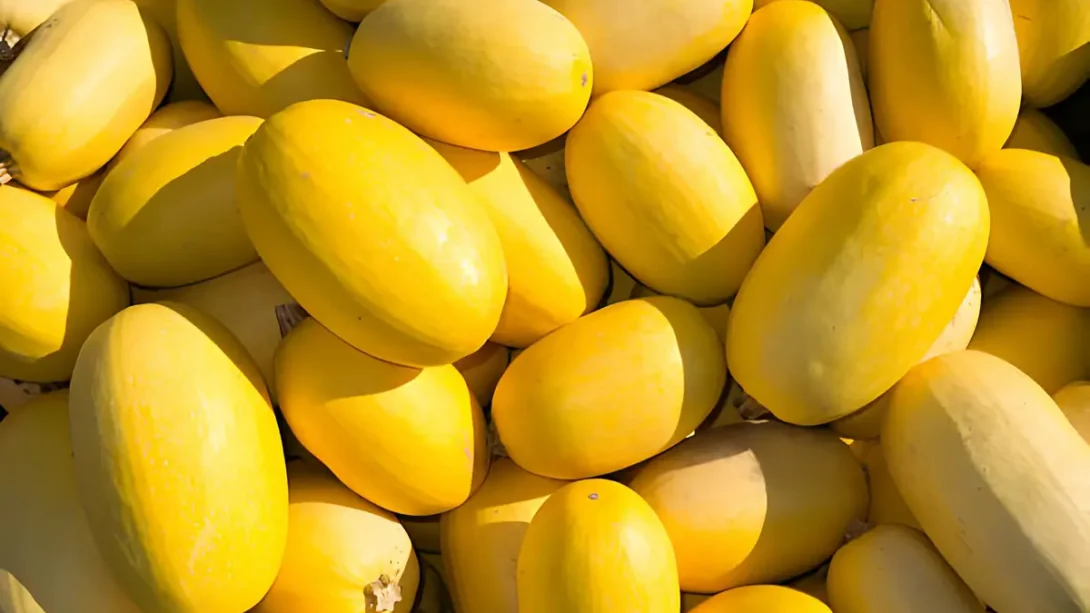Spaghetti squash, with its unique texture and versatility, has become a favorite among health-conscious eaters and culinary enthusiasts alike. Proper storage of spaghetti squash not only extends its shelf life but also preserves its nutritional value and taste. This article guides you through the best practices for storing spaghetti squash, ensuring you can enjoy this nutritious vegetable for as long as possible.
Spaghetti Squash
Spaghetti squash, or Cucurbita pepo, is a winter squash known for its stringy flesh that, once cooked, can be fluffed with a fork to resemble spaghetti noodles. It’s a low-calorie alternative to traditional pasta, rich in vitamins, minerals, and dietary fiber. Selecting a ripe spaghetti squash is the first step to ensuring a long storage life. A ripe spaghetti squash should feel heavy for its size, have a hard, dull rind, and lack soft spots or cracks.
Storing Spaghetti Squash Whole
Whole spaghetti squash can be stored without much preparation. The key is finding a cool, dry place away from direct sunlight. A pantry, cellar, or even a cool closet can serve as an ideal storage space. When stored properly, an intact spaghetti squash can last for about 1 to 3 months. It’s important to check the squash periodically for any signs of spoilage, such as soft spots or mold.
Temperature and Humidity Considerations
The ideal storage temperature for spaghetti squash is between 50 to 60°F (10 to 15°C). Humidity levels should also be moderate. High humidity can promote mold growth, while too low humidity can cause the squash to dry out and lose its texture. If you’re storing spaghetti squash in a basement or cellar, ensure there’s adequate ventilation to prevent moisture buildup.
Storing Cut Spaghetti Squash
Once cut, spaghetti squash needs to be handled differently to maintain its freshness. Refrigeration becomes essential for preserving its quality. Place the unused portion of spaghetti squash in an airtight container or wrap it tightly in plastic wrap to prevent it from drying out. When stored properly in the refrigerator, cut spaghetti squash can last for 5 to 7 days. It’s important to inspect the squash before use, looking out for any signs of spoilage such as an off smell, discoloration, or sliminess.
Freezing Spaghetti Squash
Freezing is an excellent way to extend the shelf life of spaghetti squash, especially if you have an abundance that you can’t use immediately. To freeze spaghetti squash, first cook it by your preferred method—baking, boiling, or microwaving are all effective. Once cooked, let it cool completely, then use a fork to separate the flesh into strands. Freeze the strands on a baking sheet to prevent them from sticking together, then transfer them into freezer bags or airtight containers. Properly frozen spaghetti squash can last for up to 8 months. Labeling the containers with the date of freezing helps keep track of how long they’ve been stored.
Tips for Thawing and Reheating Frozen Spaghetti Squash
When you’re ready to use your frozen spaghetti squash, it’s best to thaw it in the refrigerator overnight. This method helps maintain its texture. For a quicker option, you can thaw it in the microwave using the defrost setting. To reheat, simply steam the thawed spaghetti squash or warm it in a skillet over medium heat. Adding a bit of water can help prevent it from drying out during reheating.
Identifying Spoilage in Spaghetti Squash
Recognizing the signs of spoilage in spaghetti squash is crucial to ensure you’re consuming it safely. Spoilage can occur at any stage, whether the squash is stored whole, cut, or frozen. Key indicators include soft spots on the rind, mold growth, an unpleasant odor, or a slimy texture on the flesh. If you notice any of these signs, it’s best to discard the squash to avoid the risk of foodborne illness. Regular inspections of your stored squash can help catch spoilage early and prevent waste.
Maximizing Freshness and Flavor
To maximize the freshness and flavor of spaghetti squash, consider these tips:
- Use Fresh Squash for Best Results: Freshly harvested spaghetti squash offers the best texture and flavor, especially when used within a few weeks of purchase.
- Cook Properly: Overcooking spaghetti squash can make it mushy and less enjoyable. Cook it until it’s just tender to preserve its distinctive texture.
- Incorporate into Various Dishes: Spaghetti squash is incredibly versatile. Use it as a low-carb pasta substitute, mix it into salads for added texture, or serve it as a side dish with herbs and butter.
Creative Ways to Enjoy Spaghetti Squash
Spaghetti squash can be a star ingredient in a myriad of dishes. Here are a few ideas to inspire your culinary adventures:
- As a Pasta Substitute: Top spaghetti squash with your favorite sauce, such as marinara, pesto, or Alfredo, for a nutritious twist on traditional pasta dishes.
- Stuffed Spaghetti Squash: Halve the squash and use it as a bowl. Fill it with a mixture of vegetables, proteins, and cheese, then bake until everything is warm and melted.
- Salads and Bowls: Add cooked, cooled spaghetti squash to salads for a unique texture, or include it in grain bowls as a filling component.
In conclusion, storing spaghetti squash properly can significantly extend its shelf life, making it a convenient and versatile vegetable to have on hand. Whether you’re storing it whole, cut, or frozen, understanding the optimal conditions and signs of spoilage will help you enjoy this nutritious squash to its fullest. With a little creativity, spaghetti squash can be transformed into a variety of delicious, healthful dishes, adding both flavor and nutrition to your meals.



